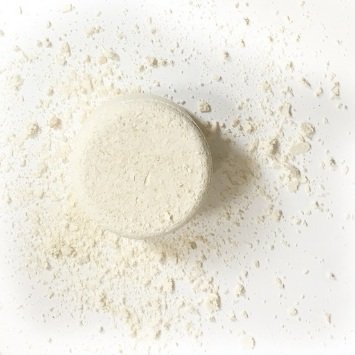How to: Oat and Honey Bath Bomb
Oats and Honey are wonderful to eat for breakfast. They are also great in the bath. Oats have long been used to help sooth inflammatory, dry skin conditions like eczema and it is thought that its soothing qualities come from a combination of the complex chemical composition which includes soluble fibre (beta-glucan), proteins, lipids, minerals and vitamins. Oats contain ergothioneine, an antioxidant, and avenanthramides, the latter are purported to have anti inflammatory, antitumor and antioxidative properties. Avenanthramides are hydrophilic (water soluble) so are found in whole oats and some water soluble oat extracts, but are not present in oat oil. In theory, using whole ground oats in the bath will give a better chance of these compounds being of use to the skin. (Modern Cosmetics, 2018)
What is a Bath Bomb?
Bath bombs are a densely packed mixtures of dry ingredients that effervesce when introduced to water. They contain a weak acid and alkaline, normally citric acid and sodium bicarbonate respectively. When placed in water an acid-base reaction takes place that creates sodium citrate and carbon dioxide. As the carbon dioxide is released, bubbles form. Bath bombs aren’t like the old fashioned bath tablets that gently fizz, they are meant to react violently, hence the name ‘bath bomb.’
What are Colloidal Oats?
A colloid can be defined as:
A colloid is one of the three primary types of mixtures, with the other two being a solution and suspension. A colloid is a solution that has particles ranging between 1 and 1000 nanometers in diameter, yet are still able to remain evenly distributed throughout the solution. These are also known as colloidal dispersions because the substances remain dispersed and do not settle to the bottom of the container. In colloids, one substance is evenly dispersed in another. The substance being dispersed is referred to as being in the dispersed phase, while the substance in which it is dispersed is in the continuous phase. (Libretext)
When grinding oats and putting them in a bath, some of it becomes suspended evenly in the water which turns the water milky, this is the colloid. Because we are creating the colloid from whole ground oats, we will not get uniformed particles, as such some of them will not disperse and will sink to the bottom of the bath-tub. If you want to find out more about colloidal oats you can visit this article by LisaLise.
For the Oat and Honey Bath Bomb we have the wonderful power of colloidal oats combined in a basic bath bomb which will provide a soothing, fizzy, water softening soak. I have also used borage oil and lavender essential oil which are widely recognised as helpful for dry, irritated skin. If you do not want to use any fragrance material, you can leave out the lavender and adjust the other ingredients to make up 100%.
This is a 400g batch. It is not advisable to make bath bombs in sizes much smaller than this; I tried a few times and it just didn’t work, even for trial sizes.
When it comes to adding the water, I have noticed that the amount you need depends on how finely the oats are ground, and how humid the air is. The oats have a tendency to absorb water which largely depends on how large the grounds are. You may need to adjust the bath bomb mix by adding more or less water.
Bath bombs can be tricky to get right, as there is a fine balance with using enough water to dissolve some of the powders without activating it too much. If the latter happens then all the ‘fizz’ will take place while you are making it and wont fizz when you come to using it.
The Formula
INCI: Sodium bicarbonate, Citric acid, Avena sativa (Oat) Kernel Flour, Mel Extract, Borago officinalis Seed Oil, Lavandula angustifolia Flower Oil,Polyglyceryl-4 Laurate, Maltodextrin, Aqua
Method
Pre-grind the oats in coffee grinder so that the particles are as small as possible.
Mix all of the dry ingredients (phase A) in a large bowl so that they are fully combined.
Premix all of the ingredients in phase B and add them to phase A and stir until combined. You may want to use your hands.
Add phase C and combine, again, using your hands (preferably gloved) to ensure the water is mixed in completely.
You will see from the image below that the mixture should hold shape in your hands. You may need to add more water. If you do, you need to be careful not to activate the powders.
Either use a bath-bomb mould or similar to form into your desired shape and leave to dry.
The Process in Images
The dry ingredients weighed and mixed together in a bowl.
The oils are added and stirred in well.
The water has been added. You will see that it is like a crumble mix - the mixture should hold together in your hand.
I used a shampoo bar press to form the bath bombs.






